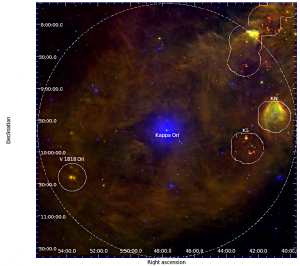Calendar
I will talk about two new possibilities to analyse the observational data on non-thermal emission of cosmic rays accelerated in supernova remnants (SNRs). The first one is related to the polarization images of SNRs. In fact, the polarized radio emission has been mapped with great detail in several Galactic supernova remnants, but has not yet been exploited to the extent it deserves. We have developed a method to model maps of the Stokes parameters for shell-like SNRs during their Sedov evolution phase. The second result bases on the time-dependent particle acceleration and relates the temporal evolution of the radio spectral index of SNR in the aftermath of the explosion to the gamma-ray spectrum at later stages. As a test case, we apply our method to describe gamma-rays from IC443; as a proxy of the IC443 parent supernova we consider SN1987A.
It is debated whether the long and intense flares observed on the PMS stars in Orion involve single and very long magnetic channels or much flatter loop arcades. This question is important because the long flaring channels may be so long as to connect the star to the circumstellar disk. In this work a new method solves the question …. (suspence is left on purpose).

of young stellar objects around V1818 Ori. This is a follow up devoted to explore the eastern edge of a ring of dust around Kappa Ori(a B0 V star) that embeds groups of YSOs to the west of the star itself. My preliminary analysis shows that also the group of V1818 Ori belongs to the Kappa Ori cluster at 250 pc and is unrelated to the Mon R2 region to which it has been associated so far.
